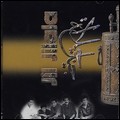In 1600, Queen Elizabeth I and Saadi Sultan Ahmed al-Mansour worked on strengthening diplomatic relations between the two Kingdoms. Their mutual enmity for Portugal have paved the way for the signing of the Anglo-Moroccan alliance and a visit of ambassador Abd el-Ouahed ben Messaoud ben Mohammed Anoun, a diplomat who is believed to have inspired William Shakespeare‘s Othello.
However, death has stopped the Queen and the Saadi sultan from carrying their plans and hence diplomatic ties between Morocco and Britain had taken a different turn. Elizabeth I was succeeded by James I, Charles I and then Charles II in 1660 and one year before that the Saadi dynasty vanished, leaving Morocco to the Alaouite sultans.
An ambassador to seize back Tangier
Under the reign of Moulay Ismail, Britain and Morocco were not on good terms and tension characterized ties between the two nations. This was confirmed by Mohamed Laamiri, an associate professor at the Institute of African Studies affiliated to Université Mohamed V, in an essay he entitled «Moroccan British Relations, a Brief Survey».
«In 1661, the King of Portugal gave Tangier to King Charles II of England as part of a marriage dowry», wrote Laamiri. «On 29 January 1662, 3000 English soldiers arrived in Tangier Bay under the Earl of Peterborough», added the professor insisting that the Moroccan-British relations deteriorated during the occupation of the city between 1662 and 1684.
According to Laamiri, Moulay Ismail has decided to send his emissary and second ambassador to England. The famous Mohamed Ben Hadou Al Attar was reportedly asked to sail for Britain to seize back Tangier.
A visit like no other
Ben Hadou’s visit to England, however, has represented more than just a political attempt for Londoners who were impressed by the diplomat’s «exotic dress and his horsemanship».
Ben Hadou arrived to England on the 29th of December 1981 and left on the 23rd of July 1682, as reported by a series of historical account. The Moroccan diplomat was lucky enough to visit prestigious universities and courts in England.
In his book «Turks, Moors and Englishmen in the Age of Discovery» (Columbia University Press, 2012), Nabil Matar described Ben Hadou’s activities in England.
«There were poems written about the occasion, descriptions in private correspondence and diaries and most importantly, news reports about the ambassador in the London Gazzette», wrote Matar.
 Portrait of Mohammed bin Hadou in the collections of English Heritage at Chiswick House
Portrait of Mohammed bin Hadou in the collections of English Heritage at Chiswick House
«Ben Hadou was entertained by royalty and seen by commoners, he wandered in the court and the city, and travelled to Oxford and Cambridge».
A member of the Royal Society
The diplomat has also visited the Royal Society; a learned society founded in November 1660 and granted a royal charter by King Charles II. The visit was referred to in Nabil Matar’s book in which he insisted that Ben Hadou «visited the Royal Society, met some of its members, and examined its research, attended banquets and concerts and engaged in public activities».
Professor Ibrahim Kredya, a Moroccan historian who has devoted three books to Ambassador Mohamed Ben Hadou Al Attar, says Moulay Ismail’s emissary has been the «first Moroccan to become an honorary member of the Royal Society». «Ambassador Ben Hadou went in his free time to the theater, the opera and visited the country. His qualities were quickly noticed at the Academy of Sciences, the Royal Society where he will be received with honors on April 26, 1682. The Ambassador has even delivered a lecture there», said the same source.
Lincoln's golden book
Ben Hadou is also believed to have visited the Lincoln's Inn, a court that prepares students for Call to the Bar and their progress to professional competence as barristers. The ambassador has even signed in the institution’s golden book in both Arabic and English.

His signature was «entered on 4 March 1682», wrote the institution on its official website. «Praise be to God alone! Written by the servant of the wise, the pilgrim to God, Muhammad the son of Muhammed the son of Haddu, belonging to Sus, the Bahamwani. May God be gracious unto him! Amen», wrote Ben Hadou.
The institution has even provided a detailed description of his visit. «This day about 4 in the afternoon his Excellency the Ambassador of Fez and Morocco went to see the Honorable Society and Gardens of Lincolns-Inn; where he was met and waited on by Sir James Butler», recalled Lincoln’s Inn, quoting the Loyal Protestant and True Domestick Intelligence.
«When he stood in the middle of the high Tarris-walk that looks into Lincolns-Inn-Fields, and the two gardens of the said Society, beholding the Beauty and Uniformity of the Buildings round about the fields and Gardens. he said he had never seen a finer prospect in a City».
Meeting people and going places in London and England in general has allowed Ben Hadou to build himself a good reputation in the country. His manners were reported by Matar who wrote that : «he did not drink wine, was courteous to women, was magnificent on horseback in Hyde Park and was interested in Arabic manuscripts and scientific innovation».

Ben Hadou has even been the «fashion of the season, generating so much excitement» when passing by in the streets of London.
A portrait of Mohamed Ben Hadou riding a hose in a park was painted by Godfrey Kneller and Jan Wyck and is preserved at the Chiswick House in London.
After the emblematic visit to England, Ben Hadou returned to Morocco with a treaty for Moulay Ismail to sign. «The Sultan, however, refused to ratify the treaty because of the continuing English presence in Tangier and the increasing complexity of the captivity problem», wrote Moroccan historian Khalid Ben Srhir in his book «Britain and Morocco During the Embassy of John Drummond Hay, 1845-1886» (2005, Routledge Curzon, translated by Malcolm Williams and Gavin Waterson).





 chargement...
chargement...













